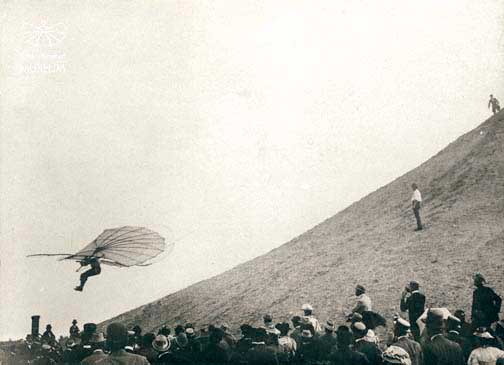Hang gliding is an air sport or recreational activity in which a pilot flies a light, non-motorised foot-launched heavier-than-air aircraft called a hang glider. Most modern hang gliders are made of an aluminum alloy or composite frame covered with synthetic sailcloth to form a wing. Typically the pilot is in a harness suspended from the airframe, and controls the aircraft by shifting body weight in opposition to a control frame.
Early hang gliders had a low lift-to-drag ratio, so pilots were restricted to gliding down small hills. By the 1980s this ratio significantly improved, and since then pilots can soar for hours, gain thousands of feet of altitude in thermal updrafts, perform aerobatics, and glide cross-country for hundreds of kilometers. The Fédération Aéronautique Internationale and national airspace governing organisations control some regulatory aspects of hang gliding. Obtaining the safety benefits of being instructed is highly recommended.





